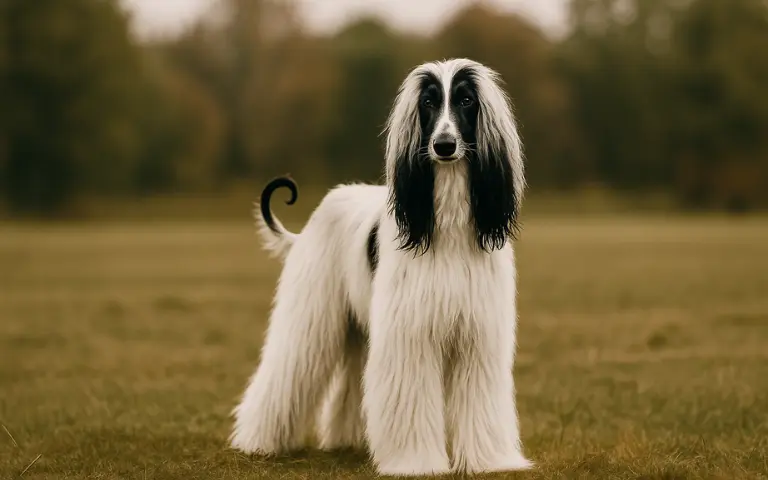Known for its timeless beauty and rich history, the Afghan Hound is among the oldest and most graceful dog breeds on the planet. Though this breed is admired for its opulent appearance and long, flowing coat, it is much more than just a pretty face. Beneath the gorgeous fur lives a dog with a proud history, an independent spirit, and a shockingly ridiculous temperament.
Often referred to as a living masterpiece, the Afghan Hound draws interest everywhere it travels. Possessing one, however, is not merely about having a lovely pet. Truly connecting with this breed requires awareness of its core instincts, coat care needs, and unique temperament.
Origin and History of Dog
Thousands of years ago, the Afghan Hound first came to be known. Originally developed for hunting big game like leopards and deer in the mountainous regions of Afghanistan, this old breed comes from there. Its great eyesight, agility, and speed made it a wonderful sight hound, that is, a kind of hunting dog that hunts prey by sight, not smell.
These dogs were treasures for the Afghan people, who cherished them. British troops and tourists brought this breed to Europe in the 19th century. Its distinctive appearance and graceful mobility soon made it well-known at dog shows and among pet enthusiasts from there.
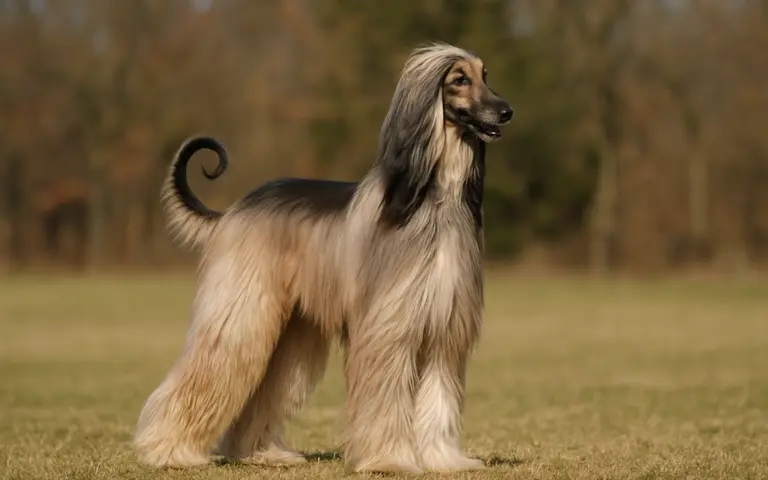
Physical Appearance and Characteristics
It’s difficult to dismiss Afghan Hounds. Their long, silky coat gives them an elegant, nearly royal appearance as they stroll. Their dramatic profile is enhanced by their small heads, almond-shaped eyes, and curved tails.
| Afghan Hound Physical Traits Overview | |
|---|---|
| Coat Type | Long, fine, and silky |
| Height | 25 to 29 inches |
| Weight | 50 to 60 pounds |
| Eye Color | Dark, almond-shaped |
| Lifespan | 12 to 15 years |
Cream, crimson, black, or blue are among the possible hues for the coat. They resemble canine royalty because of their long muzzle and straight stance, yet their expressive eyes sometimes expose a mischievous nature.
Personality and Temperament
Afghan Hounds are renownedly self-reliant. They don’t always follow instructions like more obedient breeds, often choosing to do things their way. That doesn’t mean they’re stubborn; they’re simply proud and would rather handle things on their terms.
These dogs are quite friendly with their families despite their distant attitude toward outsiders. They grow close ties and can be unexpectedly sensitive and foolish at home. But they won’t likely be too clingy. They enjoy their space and dignity.
Due to their hunting heritage, these dogs also exhibit a high prey drive. Thus, little creatures and fast-moving items might set off their chasing drive. Outside, one must have a safe yard or leash.
Is this Dog Right for You?
Not all homes are equipped to meet the Afghan Hound’s unique needs. Their beauty calls for routine maintenance, and their attitude calls for a patient, skilled owner. Homes that can match their grace with respect and time help them to flourish.
Should you seek a calm lap dog, the Dog might be excessively active and independent. However, this breed could be ideal if you seek a devoted, elegant friend who is dramatic and has a heart of gold.
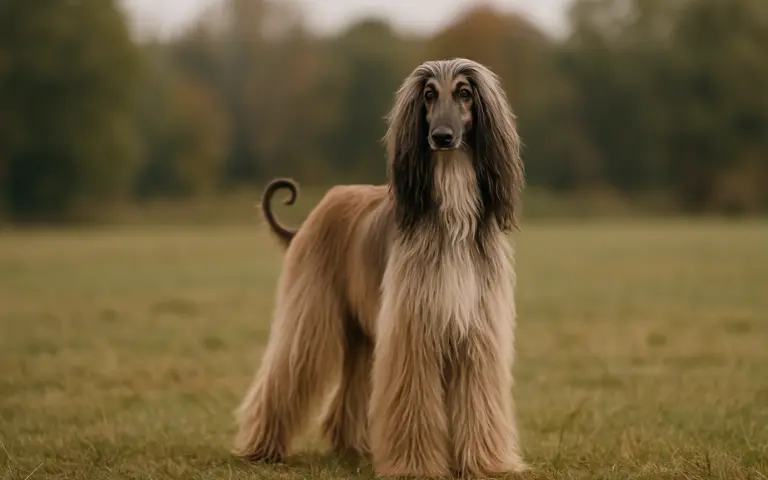
Afghan Hound Grooming and Coat Care
Grooming is among the most difficult things about having an Afghan Hound. To keep their long fur mat-free, it should be brushed often, ideally several times a week. You’ll have to be very patient and have the right gear.
Particularly if your Afghan spends time outside regularly, bathing should be done every two weeks. The coat has to be carefully combed and dried after a bath to keep it smooth and free from tangles.
Particularly for show dogs, professional grooming is strongly advised. If you’re raising your Dog as a pet, a shorter “pet trim” could help lower upkeep.
Exercise and Activity Needs
Even if they look calm and elegant, Afghan hounds are, however, quite an active breed. Although the dogs are born for long-distance travel, they cannot do without their daily exercise to be fit and happy. Outdoor walks, private playgrounds, or playing with other dogs are irreplaceable. One other thing that should be taken care of is the brain activity.
They can be trained, have fun with smelling games, or play with puzzle toys, and that will meet their clever nature’s needs. It is worth noting that an Afghan Hound should not be let off the lead in an open area without being fully fenced off. Instead of attending to your calls, they may start chasing an animal, and their instinct to hunt may take over them completely.
Feeding and Nutrition
Afghan Hounds do best on a high-quality, well-balanced diet. Since they are lean and active, they benefit from food that supports joint health and provides enough energy for daily activity.
| Sample Diet Plan for Afghan Hound (Adult Dog) | ||
|---|---|---|
| Time | Meal Type | Example |
| Morning | Dry Kibble | High-protein lamb/rice formula |
| Afternoon | Light Snack | Apple slices, dog biscuits |
| Evening | Wet or Mixed Meal | Chicken with veggies or kibble |
Fresh water should always be available, and treats should be given in moderation. Speak to your vet about portion sizes based on your Afghan’s age, weight, and activity level.
Training the Afghan Hound
Training an Afghan Hound can be both the most difficult and rewarding task. Although they have intelligent minds, they quickly lose interest in something. They are not the best candidates for harsh commands or the same old drills. Instead, you should keep your conversations short, enthusiastic, and full of praise.
To start, the best way to socialize them is to take them to people, other animals, and different locations. Offer success with a pat, a treat, and a game. Never use punishment as a training method. It can destroy their confidence.
A reminder: Afghan Hounds are a breed that was built to think independently. So if they are unsure about a command or won’t listen to it, it’s not because they are dirty; it’s because they are instinctual.
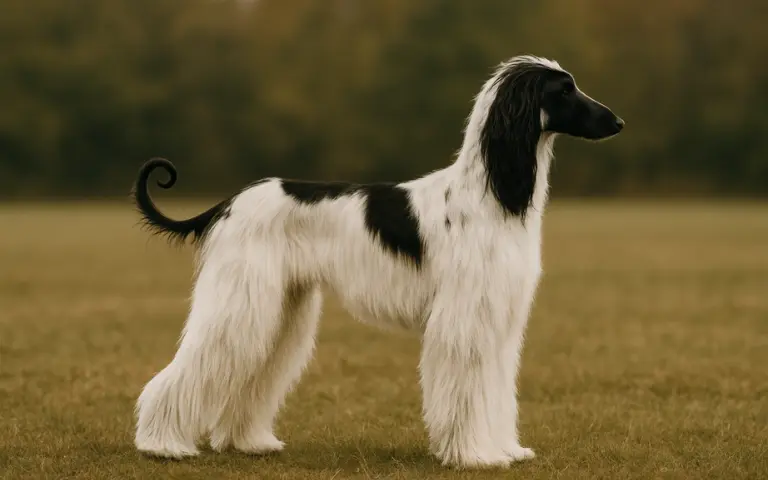
Health and Common Issues
Like all breeds, Afghan Hounds have certain health concerns to watch out for. They are generally healthy, but being aware of potential problems can help you keep them safe and strong.
Some common health issues include:
- Hip dysplasia
- Cataracts
- Allergies
- Hypothyroidism
- Cancer (especially in older dogs)
Routine check-ups, a healthy diet, and exercise can go a long way in preventing health issues. Genetic screening is recommended if you’re buying from a breeder.
Afghan Hound Puppies: What to Expect
While Afghan Hound puppies can be a challenge, they are an irresistible challenge! They are very curious, cheerful, and full of energy. Their hair only grows half its length by the time they are a year old, so grooming is easy for the first year, but as time goes on, it becomes more of a backbreaking task.
Prone to chewing things and running around the house aimlessly, these dogs are big explorers, and they need guidance every step of the way. Start training from the first week and make very gentle corrections to the things they shouldn’t do. The use of positive reinforcement is essential.
The cost to adopt or buy an Afghan Hound puppy typically ranges from $1,000 to $2,500, influenced primarily by the bloodline and the reputation of the breeder. Adopting from a rescue can offer a cheaper option and still be just as fulfilling.
Afghan Hound vs Other Breeds
Afghan Hounds often get compared to similar sighthounds like the Saluki, Greyhound, or Borzoi.
- Saluki is slightly smaller and more sensitive
- Greyhound is faster but less glamorous in appearance
- Borzoi is similarly elegant but has a different coat texture
What sets the Afghan Hound apart is its show-stopping coat, deep gaze, and proud nature. If you’re drawn to beauty with brains, this breed has both.
Living With an Afghan Hound
Afghan Hounds can adapt to various living environments but do best in homes with space to move. A house with a fenced yard is ideal, though they can live in apartments if exercised properly.
They prefer moderate climates and may not tolerate extreme cold or heat well due to their unique coat.
These dogs need time, attention, and regular grooming. They don’t do well when left alone for long hours; they can become bored and destructive.
Real Owner Experience
Coexisting with an Afghan Hound has turned out to be a fascinating challenge. I took in my Afghan Hound, Zara, a couple of years back, and ever since that time, she has acted like a true aristocrat. The attention was all on her due to the elegant way in which she moved, the flowing coat, and the deep, soulful eyes. The quirky and very independent dog was, however, underneath that glamorous cover.
At the beginning, training her seemed like an impossible task. She would give me a look that meant she got it and then simply depart. However, as time went on, I was patient, used repetition, and also, in some cases, I had to bribe her with treats so she would listen and obey. The thing that amazed me the dusk was how silly and playful she could be at home. She would run figuratively in a big circle in the living room, tossing the toys, and then all of a sudden stand still, bearing an innocent face as if nothing had happened.
Grooming is a serious task that I spend around 20 minutes brushing her every other day. There was a time when I didn’t brush her for three days, and it took me about an hour to get all the tangles off. But now I consider it our special time together. When she lies on the floor while I comb her, we both enjoy it. and sometimes even falls asleep.
Zara is incredibly sensitive. If I raise my voice or get upset, she quietly walks away and stays in her corner. But when I’m happy or relaxed, she stays close and follows me from room to room. She may seem distant to strangers, but to me, she’s family, full of elegance, emotion, and yes, a bit of drama.
Owning an Afghan Hound isn’t for everyone, but if you have patience, a calm home, and a sense of humor, they’ll reward you with a friendship that feels timeless.
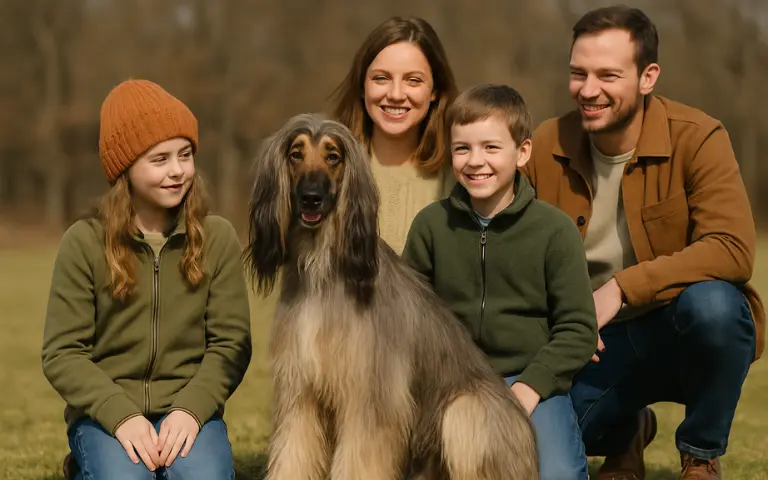
Expert Opinions & Research Insights on Afghan Hounds
Dr. Stanley Coren: Canine Intelligence Expert
Afghan Hounds have special intellect, according to eminent psychologist and author of The Intelligence of Dogs, Dr. Stanley Coren. According to Dr. Coren, Afghan Hounds rated worse in his study of canine obedience, not because they are slow learners, but rather because they are independent thinkers. “They were bred to make choices while hunting without waiting for human instruction,” he adds. This makes clear why conventional obedience training techniques could not always be effective with this breed.
Karen Pryor: Dog Behaviorist and Trainer
When working with autonomous breeds like the Afghan Hound, well-known animal trainer and behaviorist Karen Pryor stresses positive reinforcement. She believes that training an Afghan involves creating trust rather than expecting compliance. Treat them with respect and patience to make them devoted buddies. Pryor’s method, which uses clicker training and reward-based learning, is very successful with Afghans.
The American Kennel Club calls the Afghan Hound “an aristocratic dog with a dramatic appearance and a deeply loyal heart.” Their official breed profile states that Afghans are not suggested for novice dog owners, are sensitive, and need careful handling. The AKC also emphasizes that their grooming requirements are among the greatest of any breed; therefore, potential owners should be ready for this.
Veterinary Practice News: Health Note
According to a health-oriented article featured in Veterinary Practice News, Afghan Hounds are regarded as a breed having a lower body fat level than other canines. This increases their sensitivity to anesthesia, so veterinary experts must precisely determine doses. Owners need to know such breed-specific health information in case of treatment or operation.
Cynthia Branigan: Sighthound Specialist and Author
Author of Adopting the Racing Greyhound and sighthound specialist Cynthia Branigan sometimes contrasts Afghan Hounds with other historic types. She argues, “Afghans are not just show dogs; their history is entwined with Afghan culture, where they were valued for beauty and bravery.” Branigan thinks knowing where they came from makes it easier to see why they do some things that don’t make sense.
Encyclopedia Britannica
With origins dating back to pre-Christian times, the Encyclopedia Britannica records the Afghan Hound as among the earliest known dog breeds. It points out that, over millennia, the breed has mostly stayed the same, which makes it not just a pet but also a cultural symbol of Central Asia.
Fun Facts about Afghan Hounds
This Dog are one of the oldest known dog breeds, dating back over 3,000 years.
They were featured in the movie 101 Dalmatians and often appear in fashion campaigns.
Some Dog have even worked as therapy dogs thanks to their calm nature.
Pablo Picasso owned an Afghan Hound named Kabul.
Their coat is naturally odorless, one reason why they’re popular in clean homes!
Final Thoughts: Is this Dog Good Fit for You?
The Afghan Hound is a beautiful, elegant, and independent dog. Behind the glitzy facade, though, is a sensitive, caring, intelligent friend. They need lots of room to move, regular grooming, and patience, but they repay their owners with loyalty and charm like no other breed.
Should you like a dog that would turn heads, make you chuckle, and confidently stroll alongside you, the Afghan Hound might be exactly what you’re looking for.
FAQs About Afghan Hound Dogs
Most live between 12 and 15 years with good care.
Yes, they are gentle, but supervision is needed, especially with small kids.
They shed minimally, but their long hair needs frequent grooming.
They are intelligent but independent, so patience and positive reinforcement are key.
Yes, if they get enough exercise and mental stimulation daily.
